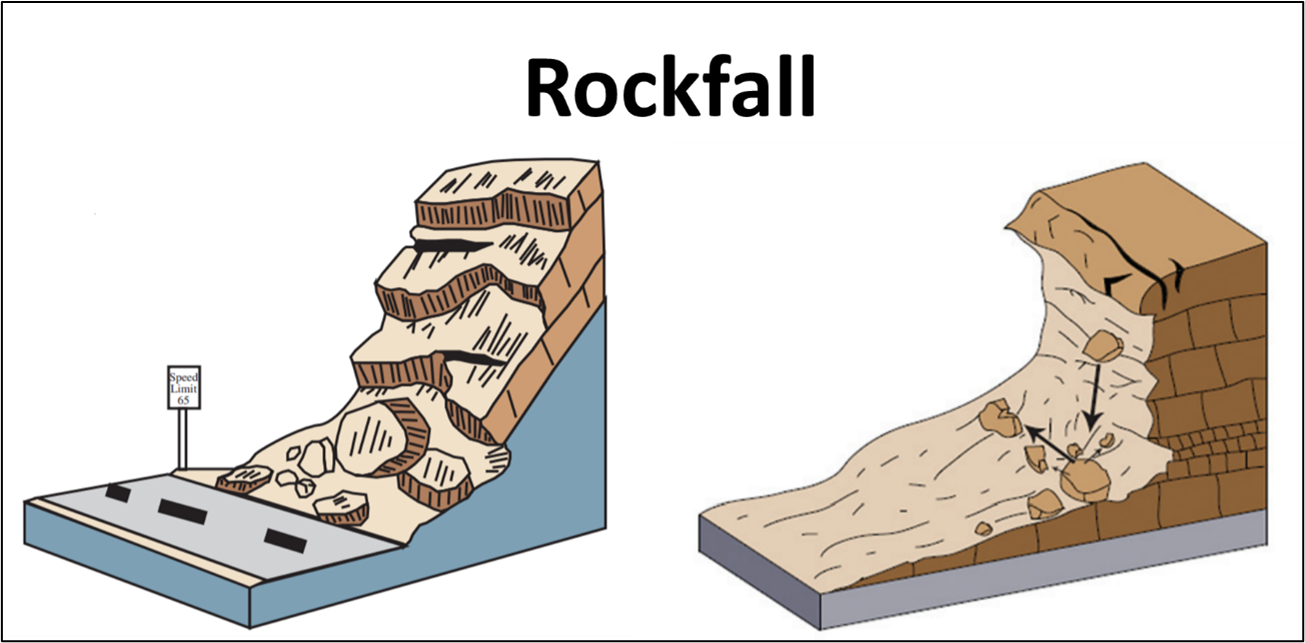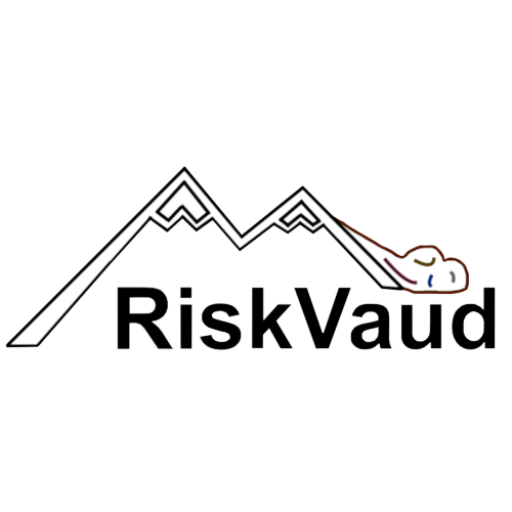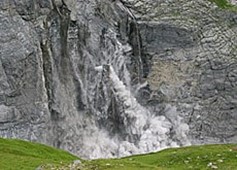Falls
by Angie Ramirez
Falls usually occur in steep slopes or cliffs, where a mass is separated generally by discontinuities (bedding planes, fractures, cracks) with a little or no shear displacement, just detached. The moving mass (rocks or soil) travels through the air by free fall, rolling, or bouncing, with a very fast to extremely fast movement until it finds a terrain flattens.
This movement is strongly influenced by gravity, but also weathering process play an important role since they can influence its generation: it could undercut the slope by rivers action or wear down discontinuities by rain and air action. Additionally, human activities (such as construction or maintenance of a road) can be considered as triggers, as well as earthquakes due to the generation of vibrations.
This type of landslide can move a variable amount of material from an individual rock or block of soil to thousands of cubic meters.
Figure 10. Eiger sheds rockfall


